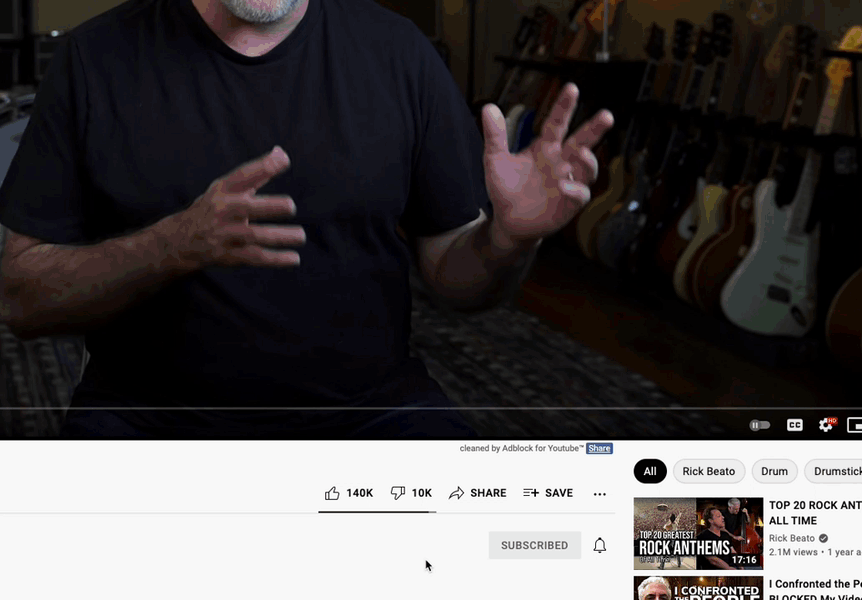Many companies and organizations post video on YouTube and share them on their web pages. We at Streamio see several problems with using YouTube as a platform for distribution of company videos. For all the trouble, there are several people who use YouTube as a platform rather than the social channel that it really is. For those of you who still want to use YouTube for your business videos, we have 3 tips for better management.
Biggest problems with Youtube as a video platform
One of the biggest problems with YouTube is that they automatically put tracking cookies on the visitors of your website. Tracking your visitors without them first approving it is a major GDPR issue. The best solution is to use a professional and GDPR-safe video platform and from there you can safely distribute your company’s videos to social channels such as YouTube. Then your business gets all the benefits of YouTube, without any of its drawbacks and potential issues. A video platform like Streamio gives you the advantage that everyone in your organization gets a single shared place and service, where all your videos can be uploaded, stored, organized and managed.
Should you choose not to use a GDPR-safe video platform to embed video on your website, here are 3 tips below for how to use embedded YouTube video as well as possible.
Three ways to embedd better YouTube videos on your site
1. Avoid tracking before accepting cookies
Number one is that it should absolutely be avoided to let YouTube track your visitors BEFORE they approve this. To ensure this, you need to make sure that the video player itself is not loaded before visitors accept your page’s cookie policy. There are many plugins that solve this for WordPress, and if you have Managed WP from Rackfish we can help you with this. Often this is solved by displaying a “placeholder image” until the visitor on the website has approved cookies, only then can the video player be loaded. However, this means that your videos will not be able to be shown to those who do not accept cookies.

2. Use YouTube's built-in Privacy-Enhanced
The second way is to use YouTube’s built-in privacy-enhanced mode. This is a little bit better than just embedding directly, but still problematic. What happens when you load a page that has movies embedded with “privacy-enhanced” is that you load from the domain youtube-nocookie.com instead. This means that no cookies are set directly when loading the page, but only when someone plays the video. However, the user is still tracked locally in the browser so this is a false sense of securityand means that the user has a harder time seeing that it is actually tracked and the data can linger for a very long time, making the management of a privacy policy complex.

3. External link to Youtube
The third way, which is the better from a GDPR perspective, but worse from a market perspective, is to simply post images that link to YouTube. It’s not very neat because visitors are led away from your page which often means you get lower conversion and thus lower sales. It is also problematic as those who click on the image and are linked to YouTube are directly tracked by YouTube/Google. The advantage of having clear links to YouTube is that users are allowed to decide for themselves whether they accept their terms and thus tracking. We would then recommend clarity of linking so that it can be seen that it is an external link. “Go to YouTube to view video.”
However, diverting your hard-earned visitors is a market nightmare, especially when it’s to a platform that makes a living profiling and exposing visitors to advertising and suggestions – after all, there’s a risk that visitors from your site will get your competitor’s advertising or suggestions in their video after they see your video. This can then mean leading your potential customers straight into the arms of your competitors.
Last tips
If you have a website with lots of embedded YouTube videos, you can relatively easily achieve a quick improvement from a GDPR perspective. We recommend making a search-and-replace throughout the site where you replace all links from https://www.youtube.com/embed/* to https://www.youtube-nocookie.com/embed/* note that the user is tracked locally which has the same effect. As soon as someone starts a movie, cookies are set and even that has to be handled.
If you want to read more tips, we recommend that you visit Axbom.com’sblog post about safer embedding YouTube video on your company’s website.
YouTube usage checklist on your own website
- Check with your GDPR manager about how your organization views the storage of personal data in third countries as this may pose a problem.
- Is the Cookie Policy up to date and takes into account the cookies set from Google, YouTube and Doubleclick?
- Is the video player embedded in such a way that it does not set any cookies until the user has approved it?

